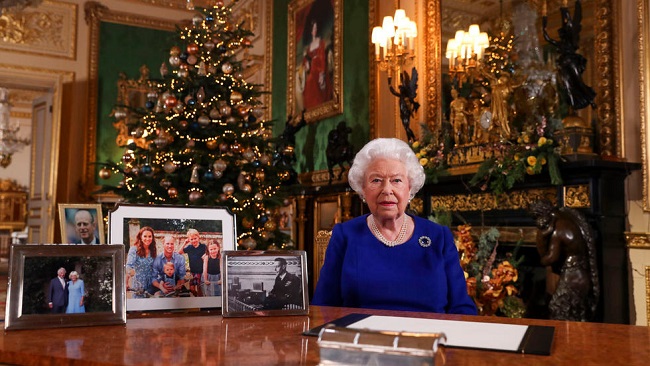22, November 2021
Israel’s Netanyahu obsessed with image, court told 0
Israel’s former prime minister Benjamin Netanyahu sought “total and complete” control over his media image, his ex-spokesman told the graft trial of the veteran leader on Monday.
“If we use the term ‘control freak,’ he is much more than that,” said Nir Hefetz. “In everything relating to the media, he demands to know everything, down to the smallest detail.”
The testimony of Hefetz, seen as a key prosecution witness in Israel’s highest-profile trial, had been postponed from last week at the request of Netanyahu’s legal team.
Netanyahu — who was Israel’s longest serving prime minister, including a record 12-year tenure from 2009 to 2021, and now head of the opposition — has been charged with bribery, fraud and breach of trust.
The indictments collectively accuse him of accepting improper gifts and illegally trading regulatory favour with media moguls in exchange for positive coverage.
Hefetz said in his district court testimony that Netayahu’s “control over everything relating to media matters and his social media channels could not be higher”.
“Netanyahu spends at least as much as his time on media as he spends on security matters, including on matters an outsider would consider nonsense.”
The session focused on Netanyahu allegedly granting favours to Shaul Elovitch, then-head of Israel’s largest telecom company, Bezeq, in exchange for favourable coverage by its Walla news website.
Netanyahu is accused of offering regulatory benefits that could have been worth millions to the company in return for the politically advantageous coverage.
Hefetz said that in 2015, shortly before elections, Elovitch contacted him regularly to lobby for governmental approval of his group’s merger with cable TV operator Yes, and to find out who would be the next communications minister.
“I think he (Elovitch) was thinking at the time: who knows who will win; so the Yes deal had to be signed first,” Hefetz said.
Netanyahu left after the first few hours of testimony Monday after receiving permission from the court.
Source: AFP


























23, November 2021
UN says West Africa has the highest number of child soldiers 0
Burkina Faso, Ouagadougou-Children in West Africa and Central Africa involved in conflict are the most employed by armed groups in the world and the most victims of sexual violence, a report released by the United Nations Children’s Fund on Tuesday. Says. ..
Over the past five years, more than 21,000 children have been hired by government forces and armed groups in an increasing number of conflicts in the region, according to the report. In addition, more than 2,200 children in the region have been victims of sexual violence since 2016, the report said.
According to the report, more than 3,500 children have been kidnapped, making it the second most abducted area in the world.
“For children of today’s and future generations, the numbers and trends are very worrisome,” UNICEF’s Director of West Africa and Central Africa, Marie Pierre Poirier, told The Associated Press.
“The serious violations against children committed by the parties to the conflict did not stop throughout West Africa and Central Africa, but also surged over the past five years, increasing the total number of serious violations confirmed by 50%. “She said.
Since 2005, the United Nations has established a system to monitor and report serious violations of children, including recruitment, abduction, rape, and attacks on schools and hospitals, one in four violations worldwide has occurred in West Africa and Central Africa. The report states that it was done.
In conflict-affected countries such as Burkina Faso, Central African Republic, Cameroon, Chad, Congo, Mali, Mauritania and Niger, violence has devastating humanitarian consequences for children and communities, and pandemics exacerbate the situation. The United Nations said.
More than 57 million children need humanitarian assistance, which has doubled since last year as a result of conflict and viruses.
While some countries have been concerned for more than a decade, according to the United Nations Annual Report on Children and Armed Conflict, there are three new areas of concern: Burkina Faso, Cameroon and the countries around Lake Chad.
Conflicts in four countries across the Lake Chad basin (Cameroon, Chad, Niger and Nigeria) have evacuated about 3 million people and killed thousands in the Zihadist rebellion this year in Burkina Faso. Has increased at least 5 times. According to information AP saw in an unpublished report by international aid and conflict experts, from four documented cases across the last year.
During the June deadly attack in the Sahel region of the country where at least 160 people were killed, children were seen with jihadists and “Alahu Akbar” (in Arabic) while burning their homes. God is wonderful).
Children associated with armed groups are often exposed to “unbearable levels of violence,” which can be followed by other violations such as abduction, sexual violence, and the killing and disability of children before and after their recruitment. .. Armed Conflict Virginia Gamba told The Associated Press.
The United Nations calls on the parties to the conflict to prevent and end violations against children and hold the perpetrators accountable. It encourages aid groups to increase documenting of violations, prevent them, and work to respond to them. UNICEF states that more than $ 92 million is needed to protect children in emergencies in West and Central Africa, more than half of which has not yet been funded.
Source: Illinoisnewstoday